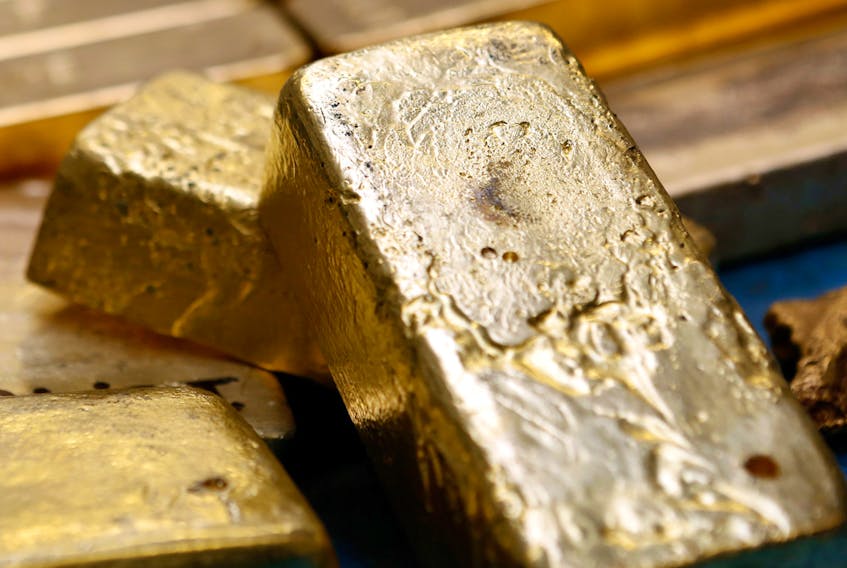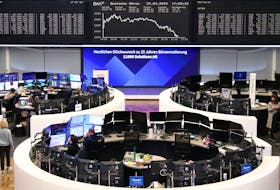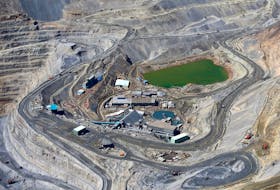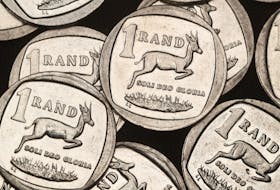If the price of gold hits an all-time in the Canadian dollar, does anyone notice?
A little after midnight on Tuesday morning, intraday gold spot prices soared to $1,895.20 per ounce — higher than any previous closing price, according to Bloomberg data.
Yet hours later, many Canadian gold companies, big and small, were trading down.
“People don’t look at gold in Canadian dollar terms,” said Bruce McLeod, chief executive of Vancouver-based Sabina Gold & Silver Corp., which is struggling to raise funds to build a mine in western Nunavut. “They don’t look at what’s actually happening.”
“The frustrating part is you have an economic project that’s permitted and nobody cares,” McLeod added.
His company’s stock was trading down 2.16 per cent on Tuesday to $1.36 as he seeks to raise around US$500 million to build a mine, which would produce 240,000 ounces of gold each year for about a decade. Yet even McLeod acknowledged some cause for optimism.
In fact, across the gold sector, investors and executives are hoping the stars have aligned after spot prices for the yellow metal crossed above US$1,400 per ounce last week, its highest point since 2013 — although spot prices in U.S. dollars remain far off their roughly US$1,900 per ounce peak from back in 2011.
In Canada, gold prices had also peaked in 2011 at around $1,881. But whereas the Canadian dollar largely traded on par with the U.S. dollar throughout 2011, the situation has changed dramatically and today, it is worth far less — about 1.32 Canadian dollars for every U.S. dollar — and Canadian gold producers are poised to reap the benefits of that shift.
U.S. gold futures were little changed on settlement Tuesday at US$1,418.70 an ounce, and have gained 10 per cent this month.
“As a Canadian company, gold in Canadian dollars is what’s actually important to us,” said Jason Neal, chief executive of TMAC Resources Inc., expected to produce around 170,000 ounces of gold in 2019 from a single mine in Nunavut.
As a Canadian company, gold in Canadian dollars is what’s actually important to us
Neal said he was watching television when he checked his phone and noticed that gold hit $1,894, an “all-time high,” by his reckoning. He calculated that if gold stays at this level for 12 months, it would add $34 million to the company’s revenues.
“For us, it’s real money,” he said. “We’re tight and we have an insatiable demand” for funds that can be put towards exploration.
His company was one of the few gold producers trading up Tuesday, rising 4.63 per cent to $6.56 at close.
Kirkland Lake Gold Ltd., which operates mines in Ontario and also in Australia, was essentially flat though down 0.29 per cent, at $42.87.
“Definitely the (rising) price of gold is positive for the gold investor,” said Tony Makuch, chief executive of Kirkland Lake.
It could attract more investors to the sector, make it easier for some companies to raise funds for their projects and even unlock a wave of mergers and acquisitions, Makuch said.
Neal agreed that it could have a positive affect on the sector.
“When you sit in front of a board of directors, and you’re pitching M&A, the board is in a better mood to support an acquisition when there’s positive sentiment in the market,” he said. “When things are going downhill, and you’re getting squeezed, everybody has a bunker mentality.”
Still, Makuch said companies should look to acquire assets at the bottom of the cycle when prices are low. He said his own company, which had more than US$400 million in cash on hand, will look to invest in other exploration companies and to conduct its own exploration work.
“We do have to recognize as an industry it’s a cyclical business,” he said. “We got to make sure we don’t get caught up in the euphoria, and start bringing on marginal projects.”
• Email: [email protected] | Twitter: GabeFriedz
Copyright Postmedia Network Inc., 2019









